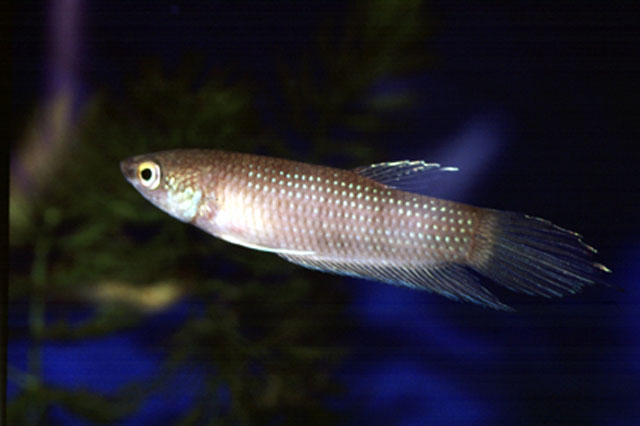| Osphronemidae (Gouramies), subfamily: Macropodusinae |
| 5.59 cm SL (male/unsexed) |
|
benthopelagic; freshwater; pH range: 3.9 - 4.2 |
| Asia: restricted to Pontian, Johor, West Malaysia. |
|
Dorsal spines (total): 1-2; Dorsal soft rays (total): 8-9; Anal spines: 1-2; Anal soft rays: 22-26; Vertebrae: 29-29. In comparison with other members of the B. pugnax species group, this can be differentiated by the following combination of characters: presence of chin-bar; absence of dark marks below postorbital stripe on opercle; presence of dorsal transverse bars; caudal transverse bars present only in male; greenish iridescent scales on opercle and body; anal fin with red subdistal border and black edge; caudal fin without distal dark edge; anal-fin rays 24-28 (mode 26); lateral scales 28-30 (mode 29); postdorsal scales 10-11 (mode 10); pelvic fin length 29.1-53.2% SL; head length 32.7-37.6% SL; inter-orbital width 34.3-41.8% HL (Ref. 56613). |
| Inhabits peat swamp forests (Ref. 84801). Occurs in blackwater habitats and commonly found only in the overgrown bank vegetation of the irrigation canals. Paternal Mouth brooder (Ref. 13220). |
|
Data deficient (DD); Date assessed: 17 January 2019 Ref. (130435)
|
| harmless |
Source and more info: www.fishbase.org. For personal, classroom, and other internal use only. Not for publication.

